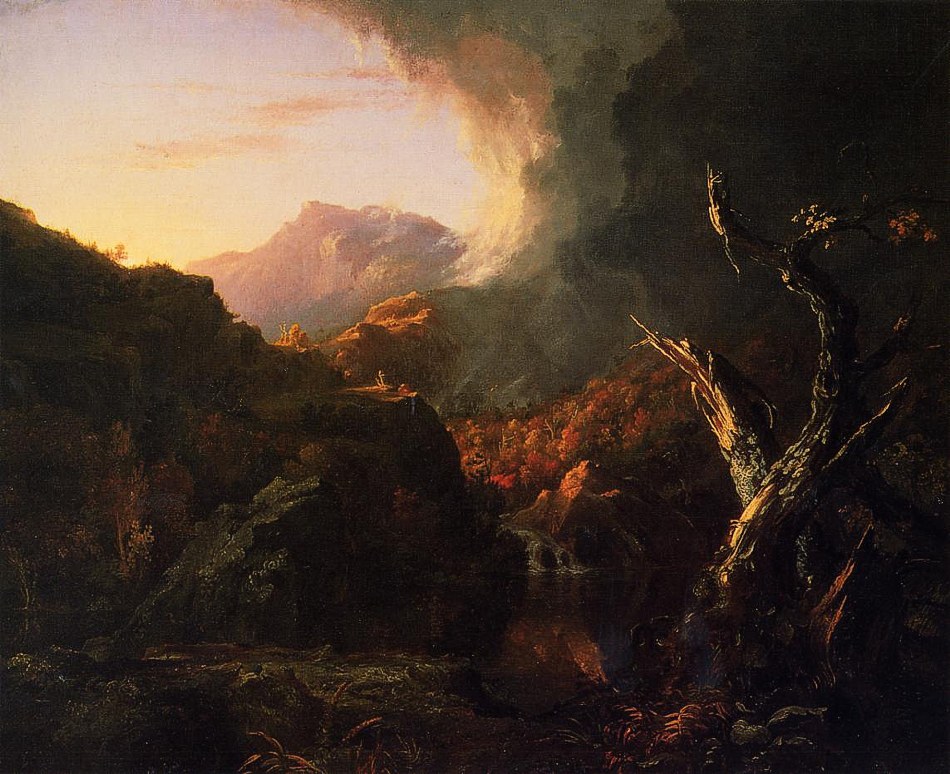| In one of his most compelling works of the late 1820's, Cole has positioned the viewer lower on the canvas, slightly behind a lake, its placid surface just beginning to glow with the reflection of a distant mountain.
In many of his paintings, Cole established a viewpoint from a high or moderately high position, looking down upon the scene, but here he has reversed things. The lower perspective more solidly brings the viewer into the scene. It is as if we are there with Cole, watching in awe as the early morning sunlight streams through a gap in a nearby ridge, and suddenly, to our right, a battered and twisted snag comes alive, the light exposing its surfaces and textures in stunning relief.
Cole was especially taken by trees. "They spring from some resemblance to human form," wrote Cole in verse describing trees. "There is an expression of affection in the intertwining branches - of despondency in the draping willow."
Cole's (and other Hudson River artists') use of gnarled and twisted trees wasn't lost on Henry David Thoreau. In Walden, he called them "blasted" trees. Before Thoreau began building his cabin in woods, he gave careful consideration to location, making sure that "each blasted tree could seen to the best advantage":
"The future inhabitants of this region, wherever they may place their houses, may be sure that they have been anticipated. An afternoon sufficed to lay out the land into orchard, wood-lot, and pasture, and to decide what fine oak or pine should be left to stand before the door, and whence each blasted tree could be seen to the best advantage." -- Henry David Thoreau, Walden
|

